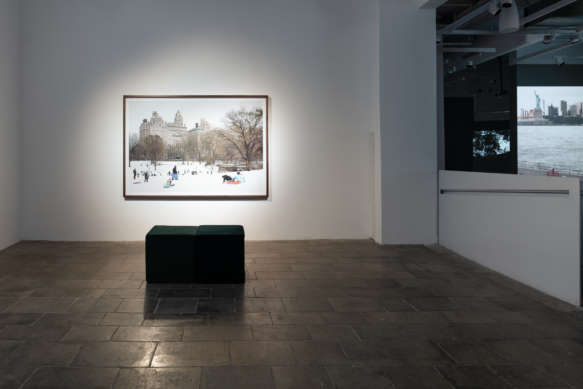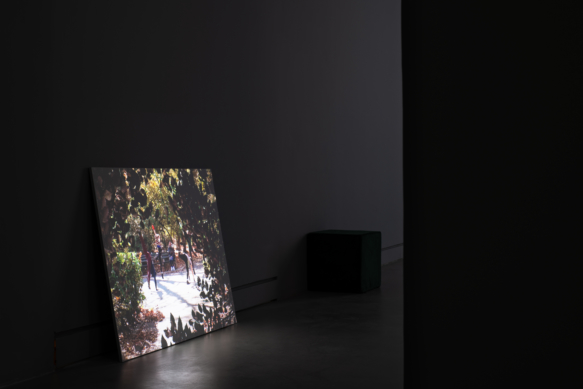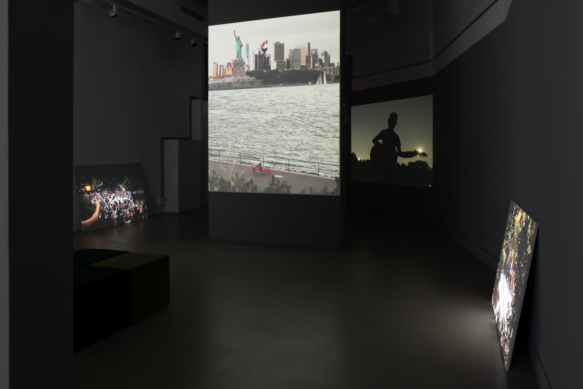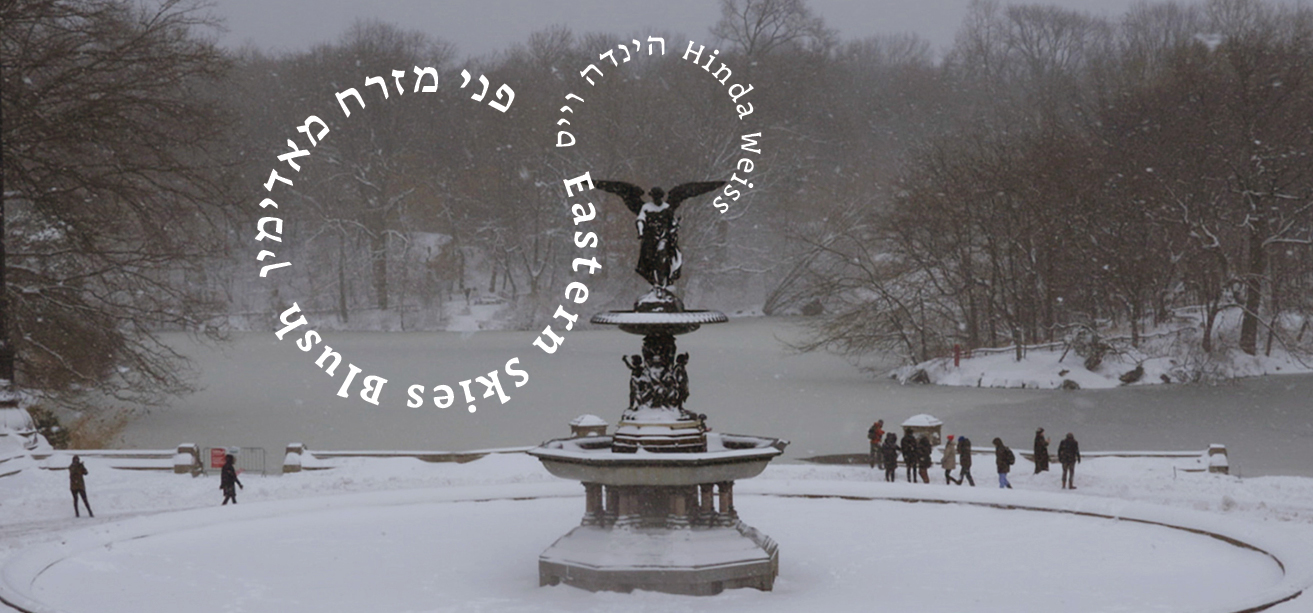According to a Talmudic discussion, one day ends and the next begins “from when the sun sets, as long as the eastern face of the sky is reddened by the light of the sun.” The question regarding the beginning and ending of a day, which is crucial in the context of the beginning and ending of Shabbat, has acquired a new meaning in the past two years, when the elasticity of time seemed to have changed. The minutes and hours lost their assigned meaning and the days became one long twilight.
The COVID-19 pandemic caught the world confused and unprepared. It caught Hinda Weiss in New York in between apartments. Without a permanent place to live, in days of constantly changing plans, she found herself roaming the streets from which those who could afford it had escaped, photographing the public spaces that were changing right in front of her. Between ambulance sirens and the roar of helicopters, between the applause for the medical staff and the calls of the Black Lives Matter protest against the police, Weiss captured spontaneous events that are details of an evolving image.
Via meticulous editing, Weiss presents a video collage that connects the different times: moments of despair and moments of respite, the parks and spontaneous gatherings, movement restrictions and lockdowns. The documented image is her raw material, from which she cuts and paints, builds new scenes and creates a different, parallel, possible reality. While the common use of advanced editing technologies is to falsify reality and present it as different from what it was, Weiss’s video collages bring us closer to reality as experienced. In the exhibition she proposes an intricate view of time and transitional moments; an augmented time which allows forward and backward observation at layers of reality that take place at different times and in different places simultaneously, crystallizing to form one image.
Two years later, we still don’t know what the end of the COVID-19 crisis will look like. We have not yet gone through enough to understand how the pandemic, with its lockdowns and quarantines, has affected us, but our eye has already begun processing the data, forming a perspective, identifying the different shades of the intermediate moment, as we try to make up our mind whether this is the sunset, or maybe it is already the beginning of a new day.
Read More











